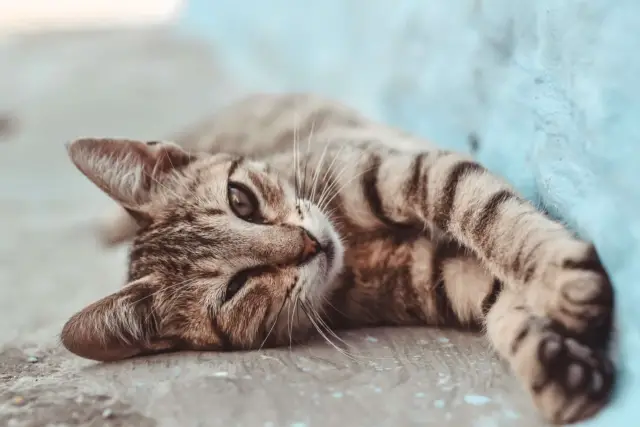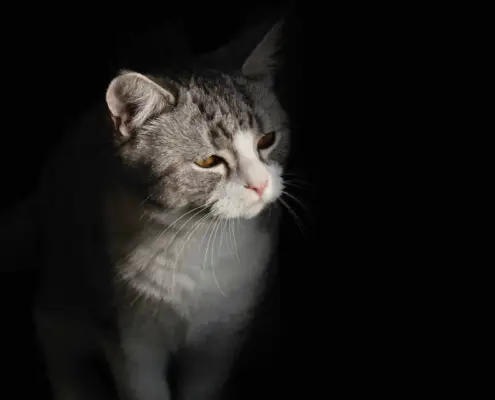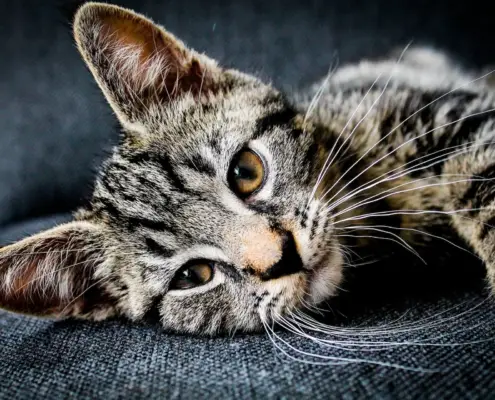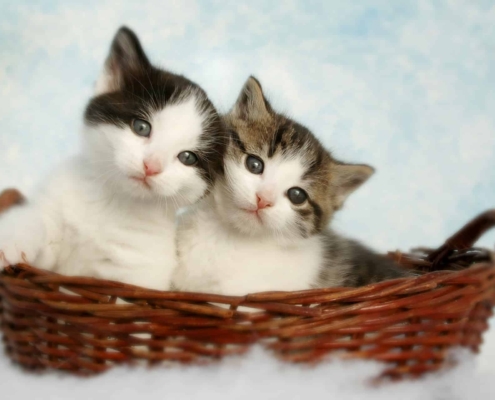
Cats have always fascinated humans with their mysterious and enigmatic behavior. From their graceful leaps to their mesmerizing grooming rituals, cats continue to captivate us. One peculiar behavior that often leaves us puzzled is their tendency to roll on their backs. Have you ever wondered why cats do this? In this article, we will delve deep into the world of feline behavior and try to decode the reasons behind this curious behavior.
Understanding cat body language
In order to comprehend why cats roll on their backs, it is essential to first understand their body language. Cats communicate through a complex system of gestures, vocalizations, and postures. Their body language offers valuable insights into their emotions and intentions. When a cat rolls on its back, it is presenting its vulnerable belly, which is a clear indication of trust and relaxation. It is crucial to note that not all cats exhibit this behavior, and the context in which it occurs plays a significant role in deciphering its meaning.
The significance of rolling on the back for cats
Rolling on the back is a behavior deeply rooted in a cat’s instincts. In the wild, exposing the belly is a vulnerable position that can leave a cat defenseless against predators. However, when a domesticated cat rolls on its back, it is displaying a sense of security and contentment. It is a sign that the cat feels safe in its environment and trusts its human companions. By exposing their belly, cats are inviting human interaction and seeking affection.
Possible reasons why cats roll on their backs
While the primary reason for a cat rolling on its back is to display trust and relaxation, there are other possible motivations behind this behavior. One reason can be to mark territory. Cats have scent glands located on their chin and cheeks, and when they rub their head against an object while rolling on their back, they leave their scent behind, claiming the territory as their own. Another reason could be a form of playfulness. Cats often engage in playful behavior, and rolling on their back may be an invitation for their human companions to join in the fun.
Instinctual behaviors and rolling on the back
To understand why cats roll on their backs, it is important to consider their instinctual behaviors. Rolling on the back can be traced back to a cat’s predatory instincts. When a cat is hunting, it may roll on its back to expose its claws and teeth, preparing to attack its prey. This behavior can be observed in domesticated cats during playtime, where they mimic hunting behaviors. Rolling on their backs can also serve as a stretching exercise, allowing cats to flex their muscles and maintain their agility.
Communication and social interaction through rolling on the back
Cats are social creatures, and rolling on their backs can be a form of communication and social interaction. By exposing their belly, cats are displaying submission and trust towards other cats or their human companions. It is an invitation for social bonding and a way to initiate play or affectionate gestures. When a cat rolls on its back and exposes its belly to you, it is a sign that it considers you part of its social circle and is comfortable in your presence.
Potential health issues related to rolling on the back
While rolling on the back is generally a harmless behavior, it is important to be aware of potential health issues that may be associated with it. In some cases, cats may roll on their backs as a result of discomfort or pain. If your cat suddenly starts rolling on its back excessively or exhibits signs of distress, it is crucial to consult a veterinarian to rule out any underlying medical conditions. Additionally, overexposure to sunlight can cause sunburn on a cat’s belly, so providing shade and protection is essential.
How to interpret a cat rolling on its back
Interpreting a cat rolling on its back requires careful observation and an understanding of the context. If a cat rolls on its back while purring and kneading its paws, it is a clear indication of contentment and a desire for affection. On the other hand, if a cat rolls on its back while growling or hissing, it may be a sign of aggression or fear. It is important to respect a cat’s boundaries and not force interaction when they are displaying signs of discomfort or aggression.
Tips for interacting with a cat that rolls on its back
When a cat rolls on its back and invites interaction, it is essential to approach with caution and respect. Start by gently petting their chin or cheeks, as these areas are less sensitive. Avoid touching their belly unless the cat explicitly shows signs of enjoyment, such as purring or rubbing against you. Remember that each cat has its own preferences and boundaries, so it is crucial to pay attention to their body language and adjust your interaction accordingly. Building trust and understanding is key to developing a strong bond with your feline companion.
Appreciating the complexity of cat behavior
In conclusion, the behavior of cats, including their tendency to roll on their backs, is a fascinating subject that offers a glimpse into their intricate world. By understanding their body language and instincts, we can decode the reasons behind their behavior and build stronger connections with our feline friends. When a cat rolls on its back, it is a sign of trust, relaxation, and a desire for social interaction. However, it is important to remember that each cat is unique, and their behavior should be interpreted in the context of their individual personality and environment. So, the next time your cat rolls on its back, take a moment to appreciate the complexity and beauty of their behavior.
If you enjoyed my article, I would appreciate you sharing it with your network.

Sima Ndlebe
Sima writes for CatBuzz. He is interested in Cats, Health and Fitness, and Entrepreneurship.
Published: 18 November 2023



